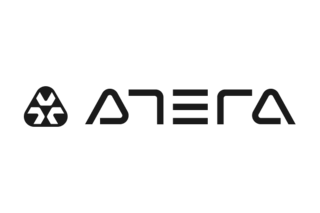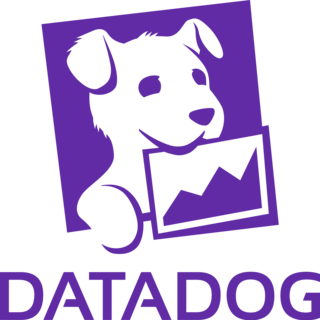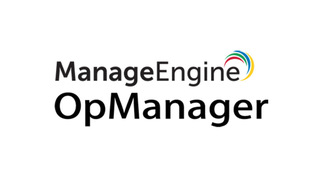Best Network Monitoring Software
Network monitoring helps businesses and organizations collect data and information about their networks, which include their individual computers and devices, routers, servers and more. Network monitoring software can help information technology (IT) departments and small businesses track their network performance, as well as resolve potential issues before they cause damage.
Keep reading to learn about the best network monitoring software, as well as the fundamentals of network monitoring, and how network monitoring software can help your business.
Our Top Picks For Best Network Monitoring Software
- Atera: Best Free Trial Period
- Zabbix: Best For Affordable Pricing
- Datadog: Best For Automation Features
- Paessler PRTG Network Monitor: Best For Customizable Dashboards
- ManageEngine OpManager: Best Bandwidth Management
Best Network Monitoring Software Reviews
Why we chose it: Atera's free trial lasts for 30 days without limitations on features or the number of devices, so you can experience the full scope of its services without having to provide credit card information.
Atera network monitoring can help you stay on top of your system resources, number of users, system updates and other system activities with real-time monitoring and customizable alerts. You can even automate tasks such as deleting files, initiating backups or scanning for security threats. Atera's patch management tools make it easy to update important programs like Windows, Java and Adobe. Monitor your network from afar with Atera's built-in remote management software, or integrate with Splashtop, AnyDesk, TeamViewer or ConnectWise for remote management. Other integrations include Malwarebytes, Bitdefender, QuickBooks, ScalePad and other popular business software.
Customer reviews from online review platforms indicate the Atera dashboard has a simple setup that's easier to learn than other large software solutions. However, many customers complained that Atera's scripting tool — which you can program to perform repetitive tasks or access data — was not as user-friendly as other basic computer scripting tools. Reviews from large companies also complained of lagging.
After your free trial, small to medium-sized businesses can choose from three paid tiers:
- Atera Professional — $149 per technician per month billed annually or $169 per technician per month billed monthly
- Atera Expert — $169 per technician per month billed annually or $199 per technician per month billed monthly
- Atera Master — $199 per technician per month billed annually or $239 per technician per month billed monthly
Large businesses should contact Atera for a quote.
Why we chose it: Zabbix is free, open-source network monitoring software. You can use it to customize your own free network monitoring tool to track data from your network.
Zabbix is completely free software you can download to help build your own network monitoring system. Though it can be great for businesses that need a cost-effective solution for their IT departments, the learning curve of building your own system can be steep. If you don't want to build your system from scratch, Zabbix provides professional help and templates for a fee. Software upgrade services from the Zabbix team cost between $1,500 and $21,900, depending on the amount of data your business has and the time it takes. Template-building services cost between $1,500 and $6,500, depending on how long the project takes.
Zabbix provides a robust alert system. You can customize your notifications and receive them through text, email, custom scripts or messaging systems. You can also set escalation scenarios to make sure the proper team members are notified of potential network issues. In addition, the software will automatically detect new devices and configuration changes. Zabbix integrates with other business platforms, including Amazon Web Services, Cloudflare, McAfee, Slack and some Microsoft and Google programs.
According to reviews, some customers have trouble learning how to use Zabbix. The level of customization available makes Zabbix less intuitive than other pre-set platforms. However, Zabbix customer reviews show satisfaction with the cost-effectiveness and quality of the software overall.
Why we chose it: Datadog combines basic network monitoring features with the Datadog Watchdog, which uses AI technology to detect issues and help you resolve them quickly.
Datadog stands out for its Watchdog feature that uses AI technology to identify network anomalies and automatically perform root cause analyses, helping you resolve issues without manual investigation. In addition, Datadog uses live mapping to monitor network traffic, which can help you identify congestion that may be slowing down your network.
Datadog is a cloud-hosted software, so you don't need physical servers to use the program. It includes more than 600 built-in integrations including Amazon, Microsoft and Google products and other business software. That said, Datadog was not designed to monitor network hardware. Rather, it is better for cloud network monitoring and monitoring network performance.
Some customer reviews cite difficulties using parts of the interface, which may not be as intuitive as other software, as well as confusion when setting up the program. While most customers had a positive experience with the program's customer support, others had a hard time finding solutions.
Datadog is priced per host, which is any device that uses Datadog's network monitoring software. The Network Performance Monitoring plan, which monitors metrics relating to network traffic, starts at $5 per host per month if billed annually or $7.20 per host per month billed monthly. The Network Device Monitoring plan, which monitors the health of devices, starts at $7 per device per month billed annually or $10.20 per device per month billed monthly. You can try Datadog free for 14 days.
Why we chose it: Paessler PRTG Network Monitor provides customizable, responsive dashboards for desktop, iOS and Android devices, as well as customizable reporting templates.
Paessler PRTG Network Monitor lets you customize your dashboard with a drag-and-drop editor with over 300 widgets, such as device statuses, traffic charts and custom images. Create different dashboards to display information related to your network monitoring goals. Then choose to keep your dashboards private or publish them internally or externally.
On top of customizable dashboards, Paessler lets you build a custom network map to view network traffic and identify congestion. Paessler can send alerts via text, email, push notifications, Microsoft Teams, Slack, Syslog messages and more. You can also customize reports or use Paessler's report templates for easy-to-read data. You can export your reports as PDF, HTML, XML or CSV files for ease of use.
Most online customer reviews show satisfaction with Paessler. However, since Paessler software is so comprehensive, it may be more suitable for tech-savvy users. Some customers struggled with the steep learning curve and the time it takes to get used to the platform.
Paessler PRTG Network Monitor has both free and paid versions. The free version supports up to 100 sensors or metrics within your network, which are the data points that you track to monitor network performance. If you have a larger business that needs more metrics, you can upgrade to paid versions that support 500 to 10,000 sensors for $1,899 to $16,899. Both the free and paid versions include full features and capabilities.
Why we chose it: ManageEngine OpManager offers an all-in-one network monitoring tool for up to 10,000 devices, and its Network Traffic Analysis plug-in lets you track bandwidth usage in real time.
ManageEngine OpManager has a highly-customizable dashboard that you can build with over 200 widgets. Examples include the Threshold Breakers widget, which gives a quick list of the devices exceeding thresholds for a specific metric, and the Tabular Data widget which condenses data into easy-to-read tables.
OpManager integrates well with other ManageEngine products to monitor and collect data from other parts of your technological system, such as bandwidth monitoring and IT operations management. In addition, its fault management system reduces false positives to avoid an overabundance of alerts for administrators. Instead, it filters alerts and color-codes them to make it easy to address the most important alerts first. However, ManageEngine OpManager's Standard tier does not include many reporting features. You'll need to upgrade to at least the Professional tier to access all the network data it collects.
Customer reviews on popular review sites are generally positive. Many customers find that ManageEngine OpManager is worth the investment and provides meaningful data that helps them manage their network effectively. However, some customers struggle with the time it takes to learn how to use the software since it is so comprehensive.
ManageEngine OpManager offers the following tiers:
- Standard — $245 for up to 10 devices
- Professional — $345 for up to 10 devices
- Enterprise — $11,545 for up to 250 devices
Contact ManageEngine to learn about Enterprise options for up to 10,000 devices. Note that the Standard and Professional tiers do not include all the features of the Enterprise tier, such as multi-site/distributed network monitoring or bundled add-ons. You'll have to pay to access those features even if you don't have a large number of devices.
Other Network Monitoring Software We Considered
SolarWinds Network Performance Monitor
SolarWinds Network Performance Monitor is an excellent tool for large businesses. Its features include strong reporting with customizable templates that help with compliance. In addition, it uses both Simple Network Management Protocol (SNMP), which takes devices offline if they act abnormally, and packet analysis to analyze where and how issues arise. However, SolarWinds is designed for large IT departments and may be overwhelming for small to medium-sized businesses.
Nagios XI
Nagios XI is a popular network monitoring tool with extensive features. It can monitor each node within your network to measure metrics like availability, uptime and response times to identify areas that are causing issues within your network. However, the Nagios interface is outdated, making it less intuitive than other software.
Auvik
Auvik is a cloud-based network monitoring solution that doesn't require a physical server. This makes it easy to monitor multiple networks in different locations and compile the data in one place. However, Auvik provides only a basic set of network monitoring features and doesn't provide any integrative add-ons, which might limit your monitoring capabilities as your business grows.
Network Monitoring Software Guide
Read on to learn about how network monitoring works and how the different types of network monitoring can help your business.
What Is Network Monitoring?
Network monitoring is the process of continuously gathering information about a network to identify issues and make sure that the entire network is running well. For example, you can use network monitoring to figure out why network traffic is slow or why certain network components aren't functioning properly.
Network monitoring software is designed to catch threats to network performance before they cause issues. The software then alerts administrators, who can access network data and devices to get the network back on track.
Good network monitoring software should perform basic functions such as visualizing the network to see configurations and infrastructure, continuous monitoring and troubleshooting and an easy-to-use dashboard that presents data about overall network performance at a glance.
Network monitoring may be confused with network security monitoring. Network monitoring only tracks internal behaviors, while network security monitoring also identifies external threats. If you want to protect your network from external security threats, look into the best antivirus software or the best VPN services.
How Does Network Monitoring Work?
Network monitoring typically begins by identifying the devices within a network and the metrics you want to measure, such as bandwidth usage, latency or network delay, network availability or traffic flow. Administrators can use network monitoring software to choose metrics and how often to monitor them or to analyze different devices based on their importance to the integrity of the network.
Many network monitoring tools use Simple Network Management Protocol (SNMP), which monitors a network and takes devices offline if they behave abnormally. The software will ping each device, typically between once a minute and once an hour, to gather information. If the device displays behavior that is outside the network administrator's set threshold for a chosen metric, the software will create an alert and take the device offline to minimize the threat to the rest of the network.
Other network monitoring software uses Internet Control Message Protocol (ICMP), which monitors the network and creates error messages when network devices fail.
The Four Types of Network Monitoring
There are four main types of network monitoring:
Network Availability Monitoring
Network availability monitoring determines whether a device is online or offline. A network availability monitoring tool might provide statuses for each device as well as check the device's hardware and systems to detect issues proactively.
Tools that use SNMP can monitor device availability and usage more thoroughly, while tools that use ICMP give simpler "online" or "offline" updates. In addition, event logs display overall information related to system usage and can provide updates on issues with network routes.
Network Performance Monitoring
Network performance monitoring is similar to network availability monitoring, but it adds other metrics that show the overall health of the network. For example, metrics might measure network utilization or latency. SNMP tools can send alerts when a system is being overutilized, while event logs can create alerts when your system hits your specified thresholds.
Network performance monitoring can also use:
- Flow-based monitoring: Monitors network bandwidth in flow conversations, when traffic is moving from one point in your network to another
- Packet capture analysis: Analyzes snapshots of data from traffic flow to identify network issues
- Streaming telemetry: Collects network performance data continuously in real time
Network Infrastructure Monitoring
Network infrastructure monitoring provides data on servers, databases, containers and all other components of a network.
Businesses that use both on-premise and cloud components in their network may use network infrastructure monitoring to integrate data from both parts of their network. While some cloud services provide their own network monitoring software, it can be difficult to compile data from both cloud and on-premise networks in one place without multiple monitoring tools. Therefore, businesses with both types of networks may want to use network infrastructure monitoring to create a system that works for them.
Network Configuration Monitoring
Network configuration monitoring is essential for businesses that use their own configuration files, which define the baseline settings for an operating system. Network configuration monitoring tools can help compare configuration files across devices to help administrators ensure consistency across their network.
For example, network configuration monitoring tools may find different commands that are set to access the same data on different devices. They will then either alert administrators, who can change the commands to make them uniform, or the software may be set to make changes itself. Network configuration monitoring software can also track configuration changes and revert back to the proper configurations if a user makes unauthorized changes.
How We Chose The Best Network Monitoring Software
We used the following factors to choose the best network monitoring software:
- Features: We chose network monitoring software that provides a large number of features, such as completing multiple types of network monitoring with one platform.
- Integrations: We selected software that integrates with a variety of operating systems and business applications.
- Ease of Use: We searched for tools that are easy to set up, customize and use on an ongoing basis.
- Customer Reviews: We chose network monitoring tools that have good overall customer reviews and provide a user-friendly experience.
- Pricing and Free Trials: We looked for network monitoring software that was affordable for small to large businesses while offering high value for the price. Free trials are an added bonus.




